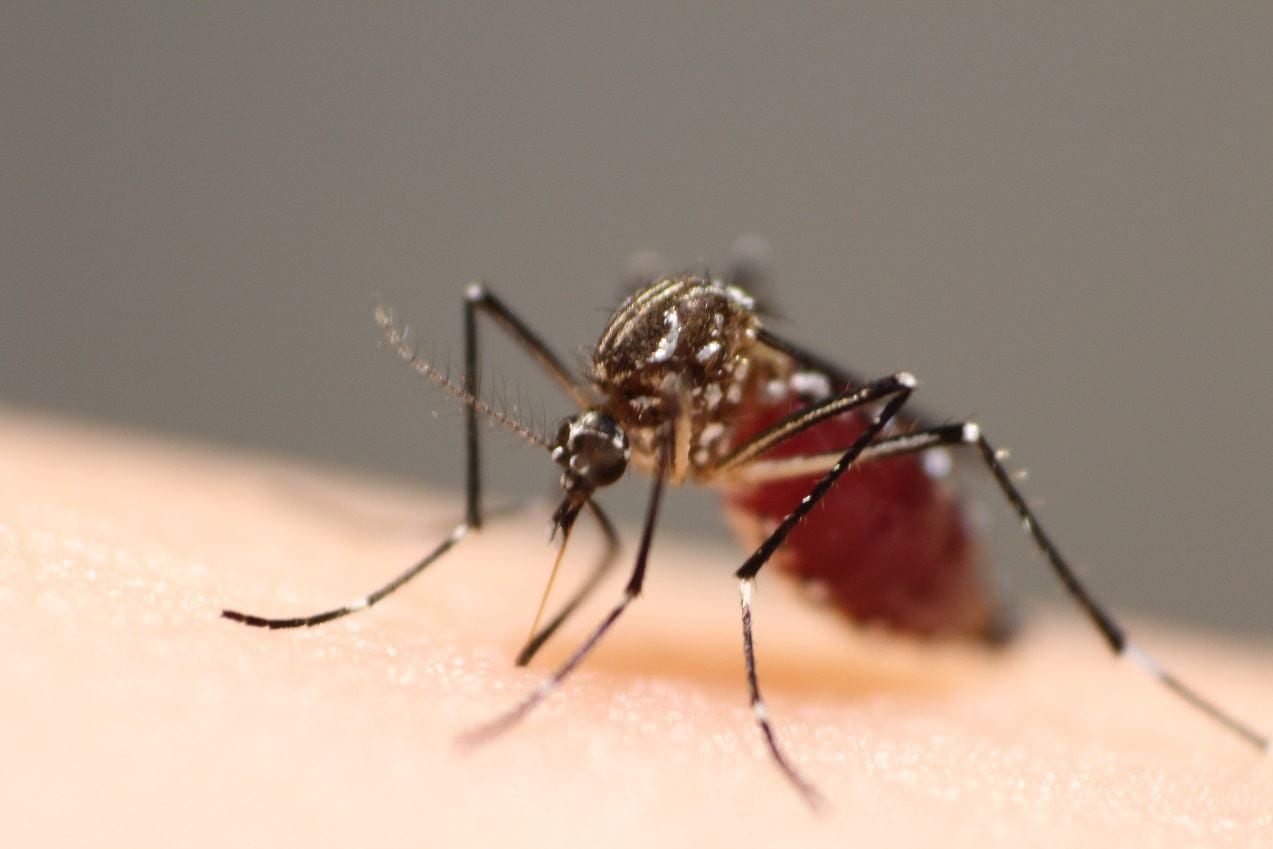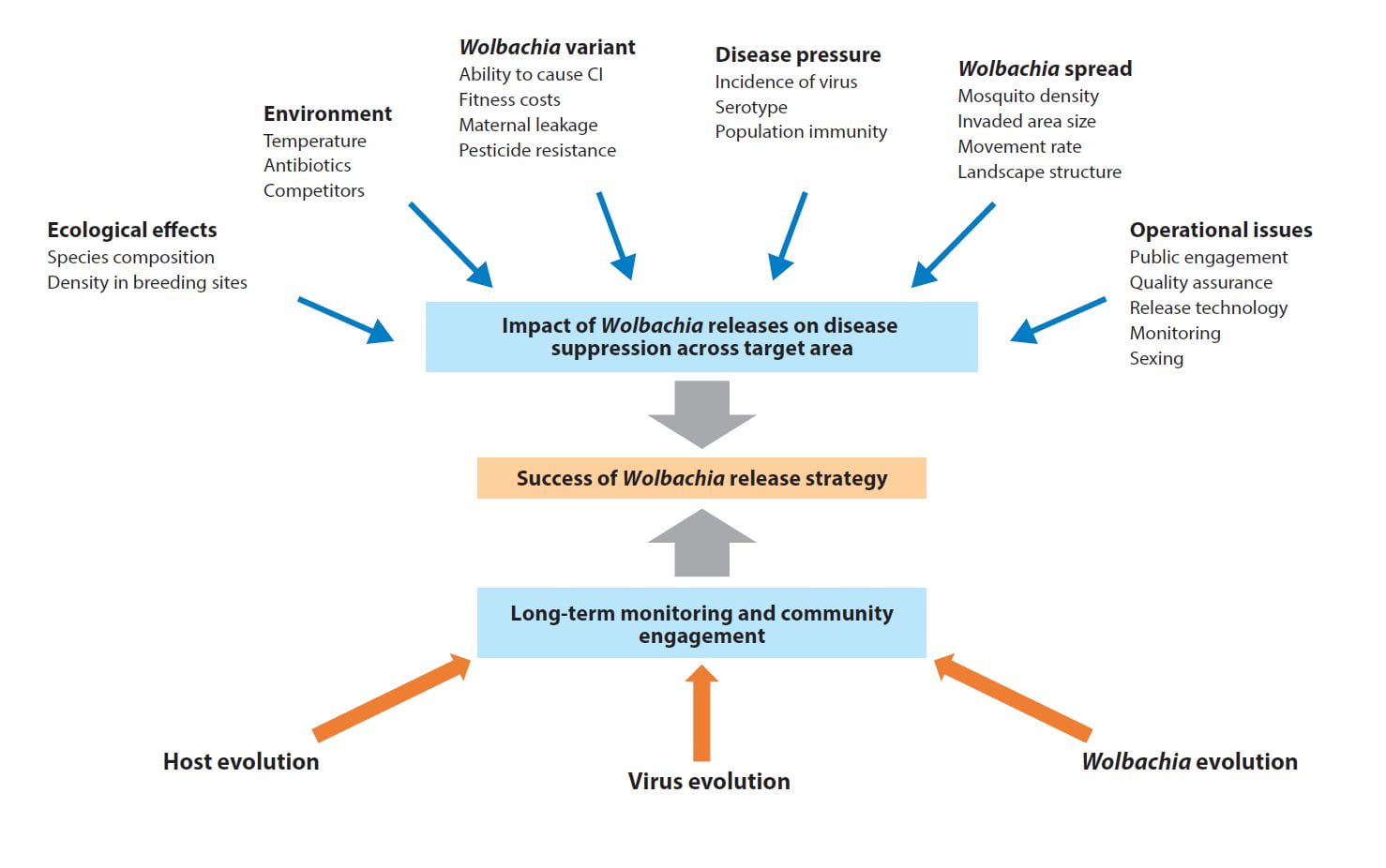
Releases of Wolbachia-infected mosquitoes for disease control
Words and images: Perran Ross
When animals raised in captivity are released back into the wild, you might picture cute and furry mammals from an endangered species. But in many countries around the world, people are releasing mosquitoes raised in laboratories into the environment. These mosquitoes feed on human blood and are vectors of dengue, Zika and other diseases, so it might seem counter-intuitive to release more of them.
In fact, these mosquitoes are being used to reduce disease transmission. They carry bacteria called Wolbachia that reduce the ability of mosquitoes to transmit viruses, including dengue. Wolbachia are passed from mother to offspring and can spread through populations of insects by altering their reproduction. These two traits make Wolbachia useful for combating diseases. In some trial locations where mosquitoes with Wolbachia have been released, it has already reduced local dengue transmission. You can read more about Wolbachia in blog posts from our lab here and here.
We recently published a paper in the Annual Review of Genetics on the deployment of these mosquitoes for disease control. In this review, we recap the releases of Wolbachia-infected mosquitoes to date and discuss factors that potentially affect the success of these programs. It’s not as simple as releasing thousands (or even millions) of mosquitoes into the wild and leaving them to it. Years of research, preparation and community engagement are needed before releases can take place. When releases are finished, it’s critical to monitor the population for impacts on disease transmission and any unintended effects on the environment.
The factors that affect the successful release of Wolbachia-infected mosquitoes can be separated into a few main areas: environmental factors, operational issues, evolution and the Wolbachia strain itself. At the Pest and Environmental Adaptation Research Group, we are exploring all these factors to ensure that releases of Wolbachia-infected mosquitoes achieve their objective of reducing disease transmission.

Many factors can affect the successful release of Wolbachia-infected mosquitoes for disease control
The success of Wolbachia-infected mosquitoes will depend on the ability of Wolbachia to invade mosquito populations and block virus transmission in natural environments. Some strains of Wolbachia are vulnerable to high temperatures, and this might limit their effectiveness in tropical locations. Landscape features like highways and multi-story buildings affect the dispersal ability and population structure of mosquitoes, and this in turn can affect the ability of Wolbachia to spread. Wolbachia can affect mosquito fitness and this might affect the abundance of other mosquito species that share similar habitats, in turn affecting disease transmission.
Mosquitoes with Wolbachia need to be able to survive and reproduce in the wild, so rearing conditions and the quality of the mosquito strain is also important. Adaptation of mosquitoes to laboratory conditions may affect their performance in the field. Suboptimal rearing conditions like the use of non-human blood for mass-rearing may also affect mosquito quality.
Wolbachia-infected mosquitoes can also be used to suppress natural mosquito populations through the release of only male mosquitoes. Here, it is essential that efficient sexing techniques are used to avoid the accidental release of fertile females. Factors that reduce the mating success of the released males with wild females will also affect the success of these programs. Although infection with Wolbachia has no clear effect on male mating ability, factors like body size can influence mating success.
Not all Wolbachia were created equal. Some Wolbachia are excellent virus blockers, while other strains have little effect or even enhance virus transmission depending on the host, viral dose and other environmental conditions. Some strains can severely reduce mosquito fertility and lifespan, making them harder to establish in the field, but they also tend to be better at blocking viruses. Variation in heat tolerance and antibiotic resistance could make some strains more useful in different contexts. Variation between Wolbachia strains is useful because it provides more options for disease control. Strains can even be combined in the form of superinfections which may have additive or unexpected effects. If one Wolbachia strain fails to achieve its objective, another could be released to replace it.
In our review, we compiled data on the effects of Wolbachia strains on mosquito fitness. Wolbachia infections that occur naturally in mosquitoes tend to be beneficial to host fitness. In contrast, strains that have been introduced into mosquitoes artificially tend to be deleterious. We would expect these strains to evolve and become less costly over time, but it’s unclear how long this will take. Effects of Wolbachia on mosquito reproduction and virus blocking may also weaken over time. While these effects have remained stable following field releases, experimental evolution studies demonstrate the potential for effects on virus blocking to evolve. Viruses could also evolve to bypass Wolbachia, though a study in cell lines suggests that this may be challenging.
Releases of Wolbachia-infected mosquitoes have already decreased local dengue transmission. The future looks bright, but there is always room for improvement. The long-term success of Wolbachia-infected mosquito release programs will depend on continued community engagement and monitoring. Future research can better inform mosquito release programs and further decrease dengue transmission.